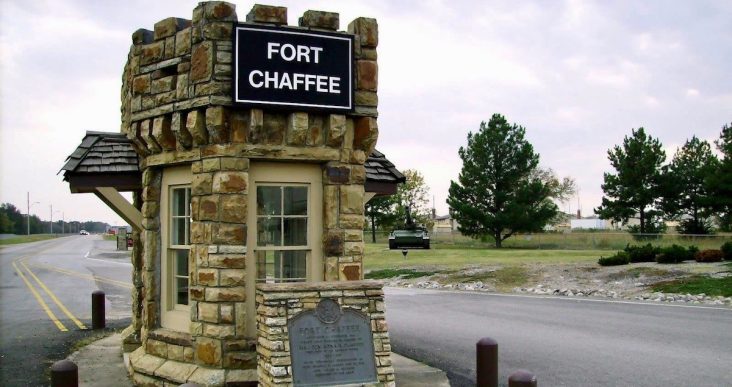Fort Chaffee upgraded to Level 1 training site; one of just five nationwide
by September 27, 2023 4:04 pm 3,523 views

Almost 30 years after it was feared Fort Chaffee would be permanently closed as a military facility, the base near Fort Smith is now just one of five among more than 150 National Guard training bases in the nation to be rated Level 1 by the U.S. Department of Defense.
According to a Wednesday (Sept. 27) news release from the Arkansas National Guard (ANG), the Fort Chaffee Joint Maneuver Training Command was “identified as a Multi Force Generation Installation-Contingency.” The upgrade from a Level 2 training site is based on maneuver land capacity and range live fire capacity, according to the ANG.
“Level 1 is the top classification that an Installation can receive,” Col. David Gibbons, Fort Chaffee Joint Maneuver Training Center commander, said in a statement. “The Level 1 designation is significant in that Fort Chaffee is now one of only five of the Guard’s over 150 nationwide Training Sites, to attain this status. Level 1 Training Sites are vital to the national strategy in the event of full-scale mobilizations. Fort Chaffee’s training numbers combined with its exceptional training facilities assured its classification. This increase in classification solidifies the national reputation of Fort Chaffee as a premiere Joint Collective Training Center.”
The ANG noted that Fort Chaffee provides more than 220,000 man-days of training annually for active, Reserve and Guard military units and federal, state, and local law enforcement agencies and departments. The U.S. Department of Energy is one of the federal agencies active at Fort Chaffee. The base has around 30 full-time military personnel and 120 state employees who work with the Arkansas Department of Military.
CHAFFEE HIGHLIGHTS
The ANG also said Fort Chaffee is the only military installation in the country with a significant navigable waterway – McClellan-Kerr Arkansas River Navigation System – available for river crossing training.
Following are other aspects of Fort Chaffee highlighted in the ANG press release.
• Fort Chaffee encompasses 65,000 acres that offer more than 50 ranges that encompass small arms, crew-served weapons, and up to larger artillery and Multiple Launch Rocket Systems.
• Within Fort Chaffee is 1,000 acres designated for the Razorback Range, where the Air National Guard trains 430 joint terminal attack controllers annually. Razorback Range on Fort Chaffee will be the training location for the future F-35 and F-16 aircraft to be stationed at Ebbing Air National Guard Base in Fort Smith
• Fort Chaffee operates one of 12 National Guard Training Support Centers with a variety of Training Aids, Devices, Simulators and Simulations (TADSS).
• Fort Chaffee also has rail-head capacity, a drop zone, two landing zones, lodging for more than 5,000 troops at one time, plus office space, a conference center, and a 550-seat theater.
CHAFFEE HISTORY
Fort Chaffee was created in September 1941 as Camp Chaffee, and was designated as a combat training site to prepare soldiers for World War II. Between 1942 to 1946, Camp Chaffee was also used as a German prisoner-of-war facility.
With the end of World War II, Chaffee was placed on inactive status but was reactivated as headquarters of the 5th Armored Division during the Korean War. The base was selected in 1956 as a training center for field artillery, and the name was changed to Fort Chaffee. Between 1961 and 1974, the base changed several times between active and inactive status.
Fort Chaffee was used as a relocation center in 1975 for the Vietnamese refugee program and then for Cuban refugees from 1980 to 1982. Years later, in 2005, the base served as one of several refugee centers after Hurricane Katrina devastated much of New Orleans and surrounding areas.
Fort Chaffee also served as the temporary home, between 1987 and 1993, for the Joint Readiness Training Center. That center eventually moved to Fort Polk, La.
The Base Realignment and Closure (BRAC) Commission in 1995 recommended the closure of Fort Chaffee. The federal government instead leased 65,000 acres to the Arkansas Army National Guard to be used for training. The remaining 7,000+ acres were turned over to local communities for redevelopment. The Fort Chaffee Redevelopment Authority was formed in 1997.
